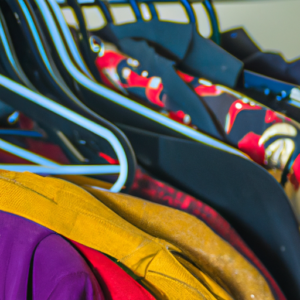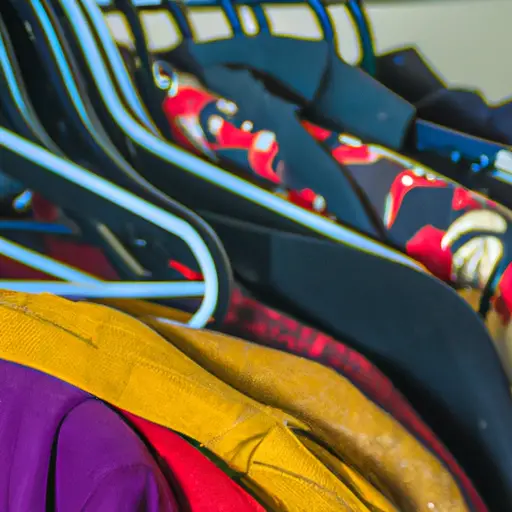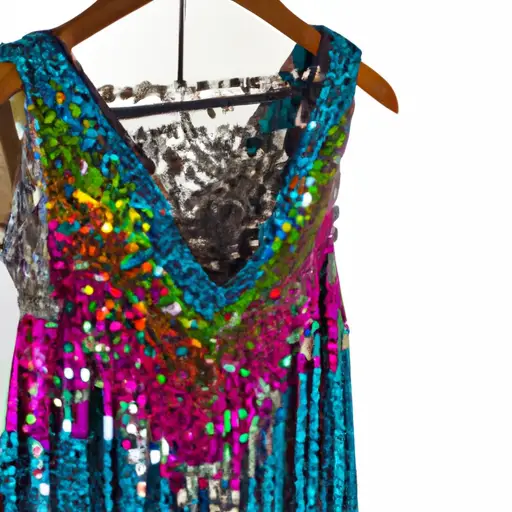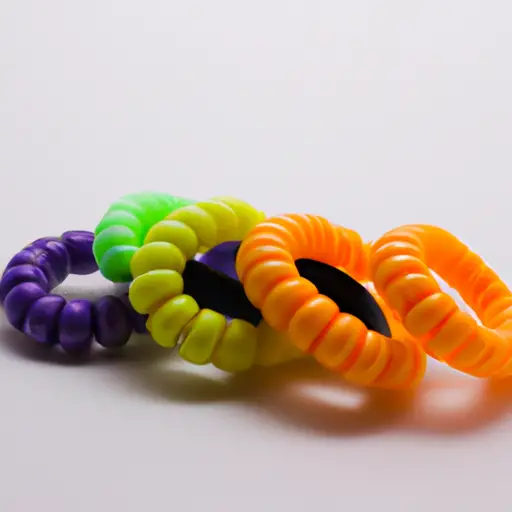Layering Clothes for Every Season
Introduction: A Guide to Layering Clothes
Layering clothes is an art form. It’s a way of dressing that takes into account weather and personal style, allowing you to mix and match different pieces in creative ways. Layering lets you customize your look for any occasion and environment – from a cold winter night in the city to a hot summer afternoon by the beach.
Layering doesn’t just make you look good, it also serves practical purposes like keeping you warm in cold climates or letting you stay cool in the heat. Plus, layering makes your outfit more versatile. You can easily adjust your layers depending on the weather, or just change things up if you’re looking for something new.
Ready to start layering? Let’s take a look at what you’ll need and some tips for getting the perfect layered look.
Preparing for Layering
So, you’re ready to tackle layering your clothes like a pro? You’ve come to the right spot! Here are my top tips on what you should have in your wardrobe so layering will be a breeze.
First, you’ll need an array of different items. Lightweight layers like tees, tank tops, and long-sleeve shirts are key. Plus, pick up some cardigans, sweaters, and sweatshirts—the bulkier the better! Throw in a few jackets—bomber, denim, leather, and everything in between—and you’re set!

I’d also suggest investing in some accessories too. Scarves, gloves, hats, and wraps can spruce up any outfit and make you look extra snug. And if you want to add some character to your winter wardrobe, try cuffing your jeans or throwing on a pair of cool boots. Now you’re all prepared for layering!
Tips for Layering in Cold Weather
When it’s cold outside, you want to make sure you are covering all bases when it comes to layering. Here’s how I do it:
Start from the inside out: That’s right, you want your first layer to be thin, lightweight and snug. Think of this as your foundation layer and then work upwards from there. Cotton or under armour are great for this.
Fabrics matter: Your next layers should be fabrics that will keep you warm without being too bulky. For temperatures below 50, go for wool, fleece, and even down. Anything thicker than that will start to feel a bit stifling.
Matters of color: Let’s face it, if you’re going to be rocking multiple layers – you want them to look good! So pick colors that compliment each other. Whether you go for a monochromatic theme or something bolder, pay attention to detail with any item of clothing you’re layering.
Tips for Layering in Warm Weather
When layering clothes for warm weather, you can still keep stylish and comfortable! Here are a few tips to master the art of layering:
Breathable fabric is key when it comes to keeping cool. Natural fabrics like cotton, linen, and silk will help keep temperatures regulated without sacrificing style. However, if you’re looking for something stylish, synthetic fabrics like chiffon, stretch mesh, and nylon offer breathability as well.
Another crucial part of staying cool is light layers. Instead of piling on bulky items, opt for loose, lightweight layers that are easy to take off and put back on as needed. Try incorporating scarves, hats, and sun dresses for an effortless look.
Finally, avoid wearing bulky fabrics like wool and knits. These fabrics tend to be heavier and can cause you to overheat quickly. Instead of these materials, choose lightweight fabrics like chambray, muslin, and rayon.
By following these tips, you can stay cool and stylish while layering clothes this summer! Have fun experimenting with different looks—the possibilities are endless.
Conclusion
Layering your clothes can be a great way to adapt to different weather conditions and look stylish. I’ve listed a few tips on how to layer in both hot and cold climates – having the right items, fabrics and colors makes the difference between looking drab or fab!
The key is to find what works for you. Try experimenting with different combinations of layers until you find the perfect fit. Use light fabrics in summer months, and switch up the colors to create contrast. Don’t forget that accessories also make a difference – hats, scarves and shoes can tie an outfit together in style. As well as keeping you warm, layering can ensure you look modern and appropriate for any temperature.
Now you know the basics of layering, why not give it a go? You’ll hopefully find that you’re more equipped to face changing weather, with lots of options to give you an edge when it comes to style.
Layering Clothes FAQ
What is the best layering for cold weather?
When it comes to layering up for cold weather, it’s all about finding the right combo of items that’ll keep you warm. First and foremost, it’s important to know what type of temperatures you’ll be facing. That will determine the type of materials you’ll need to wear. If you’re in a particularly chilly place, then you’ll want to go with wool and other heavier materials. If it’s just a bit nippy, then light layers of breathable fabrics like fleece and cotton should be enough to keep you warm.Next, you’ll want to think about the way you layer. Start with a base layer of something that fits tightly to your body. This can be a thermal shirt, cotton tank, or a lightweight sweater. That’ll help keep the cold air from entering and make sure your body’s heat is trapped.Once you have that base layer set, add a mid-layer of something heavier like a knit or quilt. This will act as an insulation layer and trap in more body heat. Finally, top it all off with a thicker outer layer like a coat or jacket. That’ll provide an extra layer of warmth and protection.Make sure to layer up in proportion to the temperature. If it’s really cold, then consider wearing multiple thinner layers rather than a single bulky one. That’ll help keep you warmer and more comfortable. Lastly, don’t forget to finish off with an appropriate hat, scarf, and gloves/mittens. That’ll help keep the heat in and make sure you’re fully prepared to face the cold!
What layers to wear in 20 degree weather?
Well, when it comes to layering for 20 degree weather, it’s important to keep in mind that you don’t want to overdo it! Too many layers can result in uncomfortable sweat and even heat exhaustion. I suggest starting with a thin, breathable layer such as a long-sleeved t-shirt or tank top. On top of that, try adding a light jacket for extra warmth. Denim jackets are perfect for this kind of temperature. Finish your look with a scarf and hat, and you’re good to go! Remember: the key is to layer wisely, so you feel comfortable while still looking stylish. Good luck!
What are the 3 layers of clothing you should wear when outside in the winter?
Well, it’s no secret that winter weather can be unpredictable, so layering your clothing is key. You want to start with a base layer of something lightweight that’s designed to keep your body warm. Look for something made of merino wool or synthetic material. This will insulate against the cold and draw sweat away from your body.
Next, you’ll want to add a mid-layer – like a fleece vest or sweatshirt. This will provide extra warmth and keep your body temperature consistent. Make sure it’s not too bulky, so it fits comfortably under your outer layer.
Finally, finish your winter look with an outer layer like a waterproof jacket, parka, or coat. This will protect you from the elements like wind and rain and make sure your body heat stays in. Look for features like zippers, drawstring hoods, and pocket closures, so you can customize it to fit your needs.
By layering your clothing for different weather, you can create a look that both looks and feels good. And, by having the right pieces on hand, you’ll be ready for whatever Mother Nature throws your way!
how to layer clothes for different weather
Woo-boy, dressing for the weather ain’t no picnic. Knowing just how to layer clothes for different weather can be tricky, but it doesn’t have to be. It’s all about knowing exactly what kind of temperature you’re dealing with and what fabrics will best keep you warm and dry.
First off, if you’re in for some cold weather, you gotta know the layering basics — which include having a good middle layer, like a thermal or a thin, high-necked fleece, and a waterproof outer layer. Now, if you’re facing some rain and wind, you gotta make sure you have an extra layer, like a waterproof breathable shell, to keep you extra dry and warm.
But there’s more to layering up than all that: You want to make sure you’re wearing right-fitting clothes, too. Things that are just a bit too tight or too loose will make you uncomfortable, so you want clothes that fit snugly, but still allow a bit of a stretch.
Now, if you’re dealing with warmer weather, then layering can seem a bit tricky. It’s all about finding the right balance of lightweight fabrics that’ll keep you cool, but still keep the chill out when the temperature drops. Think thin T-shirts, tank tops, and lightweight sweaters. Just mind the hemlines — you don’t want any fabric bunching up and making your layers look bulky.
But of course, different weather calls for different clothing. So if you can, try to have a mix of heavier, warmer clothes and lighter, cooler options. That way, no matter the temperature outside, you’ll always be able to layer up in style.






